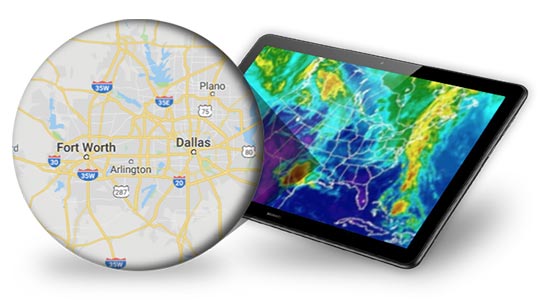24/7 Emergency Services
July 2017:

There are an extraordinary number of variables when restoring an insured’s valuables after a fire. Where did the fire start (kitchen, bedroom, laundry room, etc.)? What sort of fire was it (grease fires are very different from paper fires). Is the adjuster onsite or operating from a headquarters a thousand miles away? As well as questions about cleaning methods, cleaning materials and solutions, etc.
In fact some restoration contractors simply avoid fire and smoke jobs because they appear to be far too complicated.
But there are some things that the contents managers can do to simplify the process. First, they open strong lines of communication between the insured, the adjuster and themselves. They discuss the expectations and anticipations of all three parties involved.
Many modern contents managers will also create a written plan of action that the homeowner signs showing areas that have been damaged, items of particular interest and important valuables. This is often created with the insured during a walk through along with photographs and it is shared with the adjuster as part of a “pre-estimate” that will be used to better prepare a scope and plan of action (what is expected, what level of cleaning and restoration is allowed and what is beyond what the carrier is willing to pay for).
Team leaders will have proper training and credentials so that the removal of source materials, smoke odors and soot is contained, discovery of hidden places and spaces where odors may “hide” and paper cleaning solutions and methods ca. Be applied under their expert supervision.
When it is determined that an item cannot be restored and must be discarded, a special document is signed by the insured and a copy immediately sent to the adjuster so everyone remains on the same page.
Fire and smoke residues can be toxic when the flames consumed plastics, synthetic fibers, asbestos, lead and other substances that emit harmful VOCs. Selected rooms may be sealed off to help contain the smoke odors (and save time, money and effort for the rest of the assignment).
Many items will have to be removed from the home to complete restoration and more pictures are taken to be shared with the owner and adjuster to show before and after results, as well as to act as a template to show workers where everything belongs.
All this and more leads to a safe, quick completion with satisfied insureds and gratified carriers. Companies without trained contents professionals simply can’t offer this level of competence and proficiency.
In the final analysis, contents pros don’t cost, they save the carriers massive sums on virtually every job.
TENS OF THOUSANDS OF DOCUMENTS RESTORED
Michigan suffered an electrical fire, the structural repairs took many months to complete - but the documents from the Register of Deeds, Human Resources, the County Sheriff’s Department administration offices, the county facility department, the 911 dispatch center and others needed to be restored and returned to the various levels of government such more quickly.
The contractor used dozens of techs in a sort of triage rotation, first sorting the papers with the most damage or that were of critical need. Next, some were simply wiped off with appropriate sponges or cloth, some were freeze-dried, and as is common with document restoration assignments, some were reproduced. But all of the documents were placed in a deodorization room to remove any smoke odors.
The contents pros cleaned more than 900 electronic devices as well. And the managers added that daily communication with the government officials was key to accomplishing the tasks that were priority to them. The contractor on the assignment was quoted as saying, “If we hadn’t known the county’s needs, we probably would have handled this a lot differently.”
SAVING IMPORTANT PAPERS
AFTER A FIRE
After a fire, a stack of love letters, old check stubs, bank statements, or bills (paid or otherwise) are usually not a priority to an insurance carrier. Birth certificates, ownership papers (home, car, boat, etc.) might have a little more status, but in all probability an adjuster or agent is far more focused on making the insured’s home livable and smoke odor free.So when the homeowner wants such papers all cleaned and deodorized and the adjuster doesn’t think they are worth the cost, the contents manager has to intervene in order for the job to move forward without hurt feelings and recriminations.
Often it is as simple as pointing out that the paper has absorbed strong smoke odors and will probably contaminate any other books and papers with which they come in contact. The insured will usually reconsider the importance of the documents and will reprioritize them (ten-year-old check stubs are not nearly as important as this year’s records when it comes to tax season).
If they must be kept, our crew will normally use soot sponges or microfiber cloth to remove surface contaminants, then will put them in a “document bag” (think see-through “evidence bag”)> Then they can be sorted, copied, scanned and deodorized when the owner can get to them and has had time to consider their immediate worth.
It is a cost effective process that keeps the customer happy and makes it easy for the adjuster to authorize.
Contents Managers Avoiding “Call Backs”
Contents Managers and contractors do not want “call backs.” Not for themselves - not for adjusters and agents. So when preparing to remediate smoke odors on a specific project, they take numerous factors into consideration.
Was the fire in a small room? Or in a larger space? Fires in small, enclosed spaces have concentrated smoke odors and must be dealt with in more dynamic ways than those that occurred in more open areas.
How big was the fire? The more rooms involved, the more items consumed in the blaze, the more smoke will have been created.
How long ago did the fire occur? The longer a home or office is exposed to smoke odors, the more chance they have to penetrate wood, paper, n walls, carpet, ceiling tiles, etc.
What sort of things did the fire consume? We have written about “protein fires” in previous issues - they produce a sort of greasy film that may be invisible to the naked eye, but release smells that are far worse than almost any other conflagration. Burned plastics (television sets, computers, toys, etc.) produce a clinging soot and requires a totally different form of cleaning.
These sorts of factors will help determine the types of methods, machines and solutions that will be used to remediate the smoke odors.
Did the smoke “travel” to other parts of the home or office? Can some of the rooms be restored with only a light surface cleaning? Or do drawers, files and cupboards need to be emptied, removed or restored with extraordinary measures like “thermal fogging” and “misting?”
Contents professionals know how to do a thorough job that doesn’t have the insured on the phone to the agent or adjuster a month down the line, demanding that the job be done again because odors have come creeping out of overlooked wood, duct work, carpets and crevices.
When An Insured Wants To Help
Sometimes a homeowner will try to be helpful by joining the contents team to clean and pack various items.
One such lady was seen firing up her vacuum and trying to get the soot and smoke odors out of her couch. Before the contents managers caught her she had pressed the brush attachment firmly into the fabric and seemed determined to make it work.
The contents manager spent some time educating her about the challenges of using an ordinary vacuum and pressing it into the fabric. “Soot tends to work its way into the fibers, so pressing against the fabric makes the soot smear and cling even deeper.” And as to the vacuum itself, “We use much stronger machines that have top notch HEPA filters so the smoke odors don’t escape and scatter all over the room.”
The lady of the house got the message and went to have lunch and a movie with a friend.










